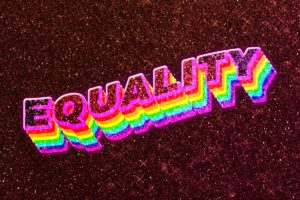By Sandra Waddock, Steve Waddell, & Paul S. Gray
Often when societies change, it is because the ideas that help shape culture and cultural norms and understandings have shifted. Drawing from Donella Meadows’ idea that changing mindsets is the most powerful lever for transformational change, we premised that documenting the shift of ideas or “memes” over time is an important part of understanding whether the ways in which things are framed shape public opinion—and, ultimately, policy.

In our recent paper, “The Transformational Change Challenge of Memes: The Case of Marriage Equality in the United States”, we trace the evolution of memes related to marriage equality from the mid-1960s until 2015 when the US Supreme Court determined that such equality was the law of the land. By focusing on what Susan Blackmore calls memes, core ideas that help shape culture, like words and phrases, we wanted to visualize whether a controversial issue like marriage equality and the language used to describe it changed over time. Further, we wanted to know whether that change might have provided impetus for important social changes that ultimately permitted members of the gay, lesbian, bisexual, and transgender community to marry.
Changing Words to Change Society: Shifting Memes with Marriage Equality in the US
As our accompanying case study revealed, changes reflected deliberate strategies by activists to shape public opinion by changing how the issue itself was framed. Early framings, for instance, used the language of rights and pride (e.g., gay rights, gay pride) and reflected other forms of activism. Later framings shifted to ideas of love, equality, and commitment through marriage in a deliberate effort to humanize gay people. That shift in language is evident in different sources ranging from mainstream newspapers to business publications to scholarly work, and followed similar patterns in each type of outlet.
Key Insights from Meme Change Strategies
How was this meme shift possible? We summarized as follows:
- Identifying and strategizing around associated memes: Marriage equality was intertwined with other memes, most notably sex, civil rights, religion, family, procreation, commitment, and love.
- Identifying distinctive memes for different transformation stages: In the late ‘60s, gay people faced very negative public opinion. They responded by developing gay pride as a key meme. That shifted to civil rights emphasis to rally the community internally, then to “freedom to marry” for the external audience in the 1990s, and finally “marriage equality”.
- Including entertainment media: The media, particularly music, television, and film, played major roles in shifting memes. In the early ‘70s, one of the most popular sit-com introduced a sympathetic gay character who was a football player.
- Finding iterative change pathways: Creating bridges and stepping-stones to the marriage equality meme was a developmental process both for the LGBT community and the broader population. It began simply with the need to support gay people to come out.
- Undertaking experiments: “Marriage” forms included first private ceremonies without legal backing, then extension of some benefits, followed by “civil union” before marriage in name.
- Forcing change through disruption and protest: Demonstrations and public marches brought the issue to the fore.
- Weaving together cultural-legal-political-movement: The transformation involved not just legal, but also cultural and political shifts as same-sex marriage became more recognized and acceptable.
- Thinking in decades, identifying tipping points: The shift to marriage equality took 45 years…and happened more quickly than many imagined possible because of specific events, making clear that long timeframes are involved in such transformations.
- Creating intense dialogue: In addition to intense public debate and discussions with politicians, there were many grassroots conversations with families and theme house parties with neighbors.
Different ways of discussing marriage equality changed how people thought about whether same sex partners could and should marry. The shift to the language of family, commitment, and love allowed some to see people who lived differently than they did as human beings with the same needs, desires, and capacity for commitment and love as themselves.
We concluded that achieving marriage equality in the US represents a transformational shift in the marriage meme over time from one that emphasized opposite sex relationship, pro-creation and religion, to one focused on the core of love, mutual commitment, and civil ceremonies. This meme shift helped reshape thinking about the reality that, no matter what their sexual preferences, most human beings desire love, family, and commitment. It also fostered changed mindsets and enabled rejection of old restrictive rule and regulations that effectively punished people for who they loved with more humane possibilities for equality in love and marriage.
This case serves as a lesson for other movements about the importance of language—memes—in framing how their efforts are viewed. Memes are the foundation of stories and narratives, which in turn shape the paradigms that frame mindsets—and it is mindsets, as Meadows reminds us, that foster the capacity for transformative change.
References
Blackmore, S. 2000. The meme machine. (Vol. 25). Oxford, UK: Oxford Paperbacks.
Meadows, D. 1999. Leverage points: Places to intervene in a system. Harland, VT: The Sustainability Institute. Retrieved from: http://drbalcom.pbworks.com/w/file/fetch/35173014/Leverage_Points.pdf, 11/18/2020.
Waddock, S., Waddell. S., & Gray, P. 2018. The transformational change challenge of memes: The case of marriage equality. Business & Society, 59(8).
